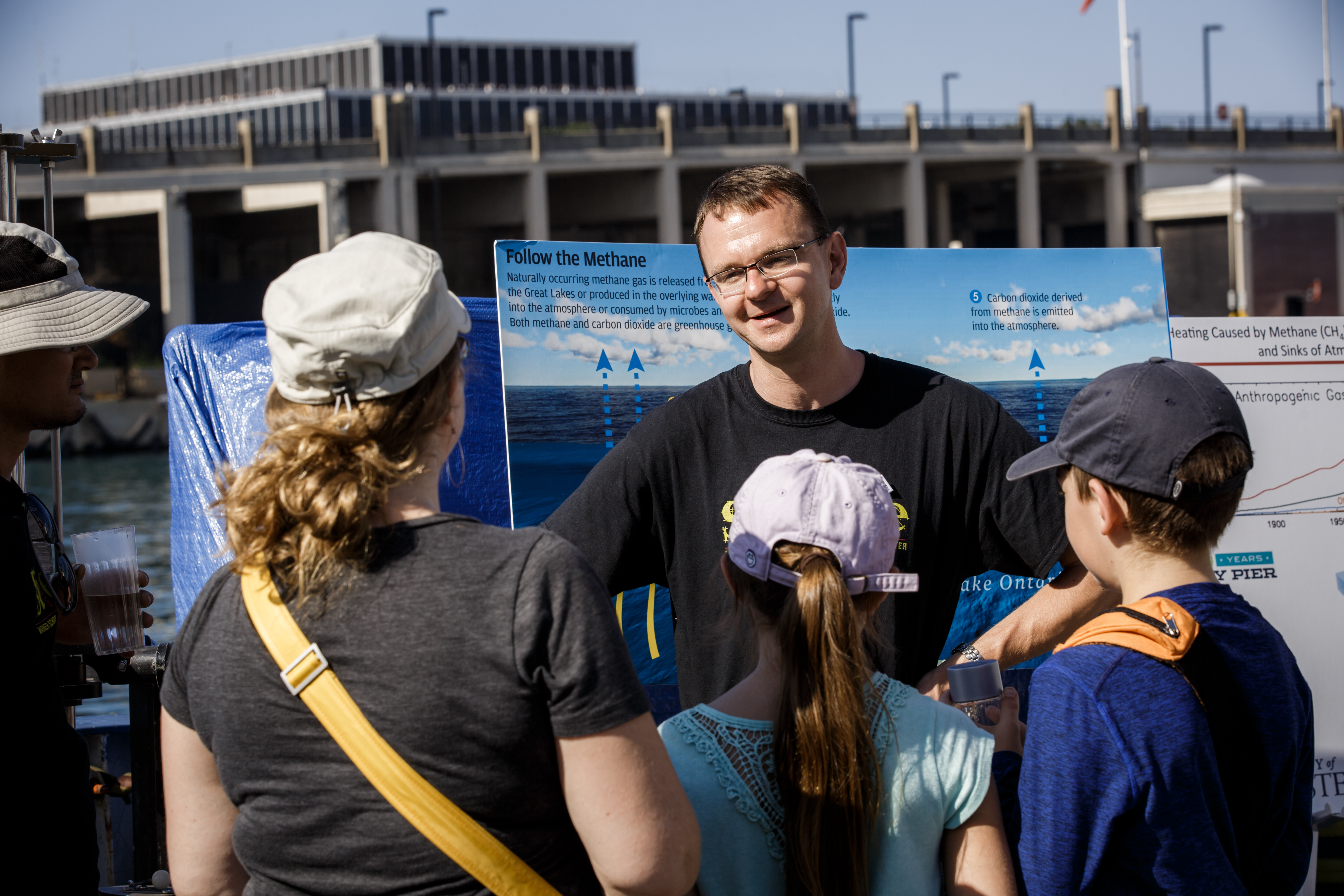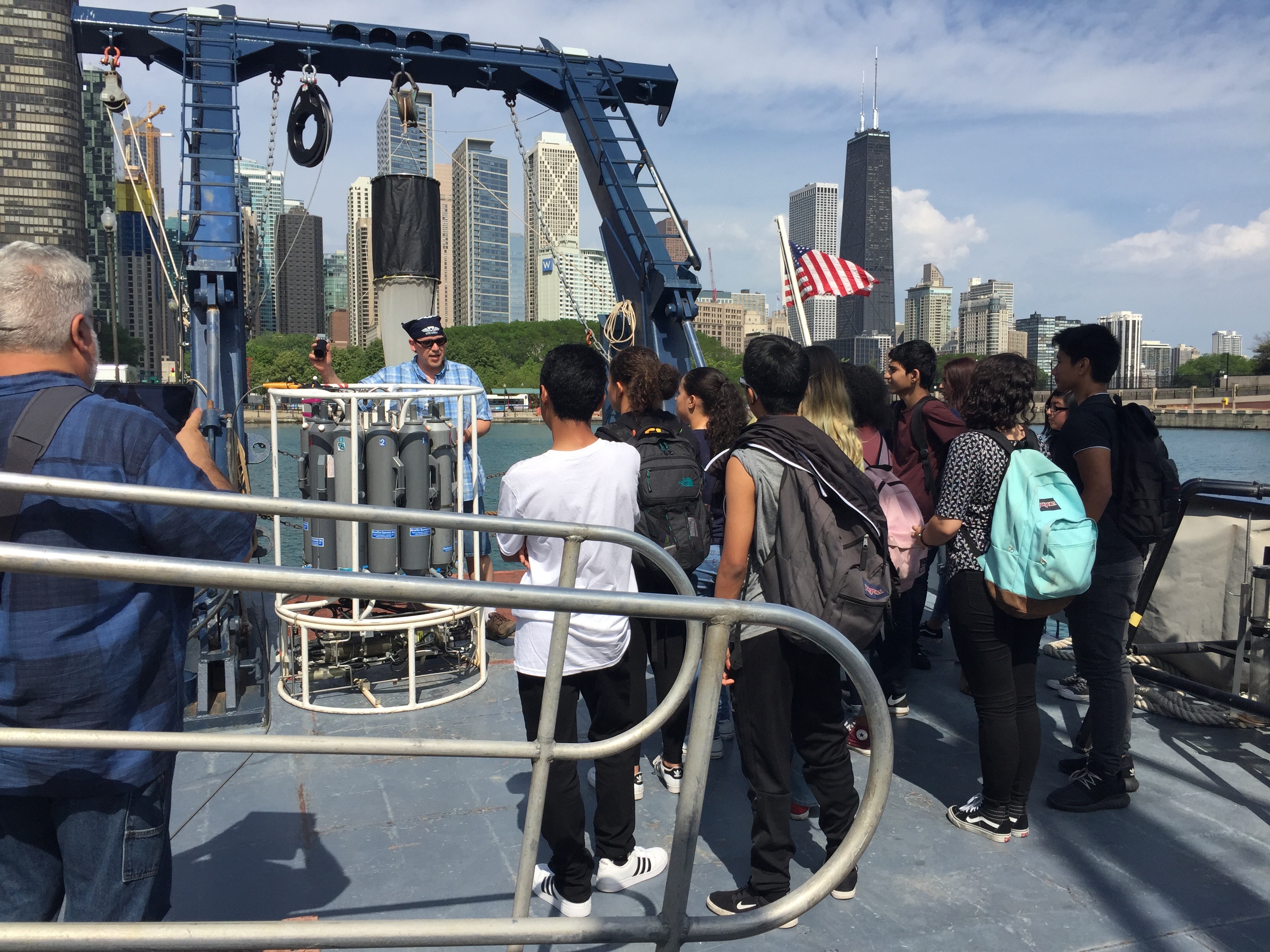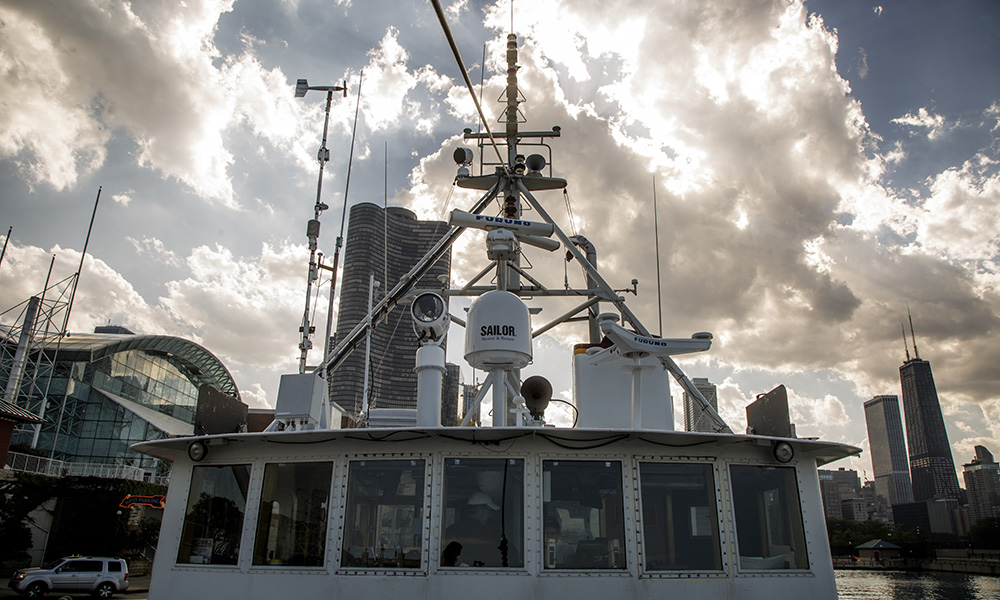When a research vessel carrying a team from the University of Rochester recently docked at Navy Pier in Chicago, a group of schoolchildren—as well as some local media outlets—paid a visit.
Aboard the Blue Heron were John Kessler, an associate professor of earth and environmental sciences, and other researchers. Pausing for an educational outreach initiative as part of their most recent research expedition, they gave free public tours of the ship in order to demonstrate its scientific capabilities and to offer hands-on educational opportunities for local students.
“Scientific outreach is a vital component of the research process,” Kessler says. “In order for our results to have impact, they much be communicated to the general public. It is also important to illustrate how the scientific process works.”

As part of a National Science Foundation–funded study, the researchers have been taking water and sediment samples and, using state-of-the-art technology aboard the vessel, measuring greenhouse gas distribution and dynamics in the Great Lakes.
The Great Lakes collectively constitute the largest liquid freshwater environment on the planet and are undergoing dramatic environmental changes, including a reduction in ice cover, warmer summers, and increased levels of invasive species. Freshwater environments are known to be significant sources and sinks of greenhouse gases to and from the atmosphere; thus the Great Lakes offer researchers an excellent laboratory in which to evaluate how greenhouse gases affect freshwater environments.
This summer Kessler and his team are continuing their work studying methane dynamics in the Great Lakes and how they contribute to climate change. The research has taken the team to Lake Michigan, Lake Huron, and Lake Superior.
The 86-foot-long Blue Heron, part of the University National Oceanographic Laboratory System, is owned by the University of Minnesota and operated by the Large Lakes Observatory in Duluth, Minnesota.







